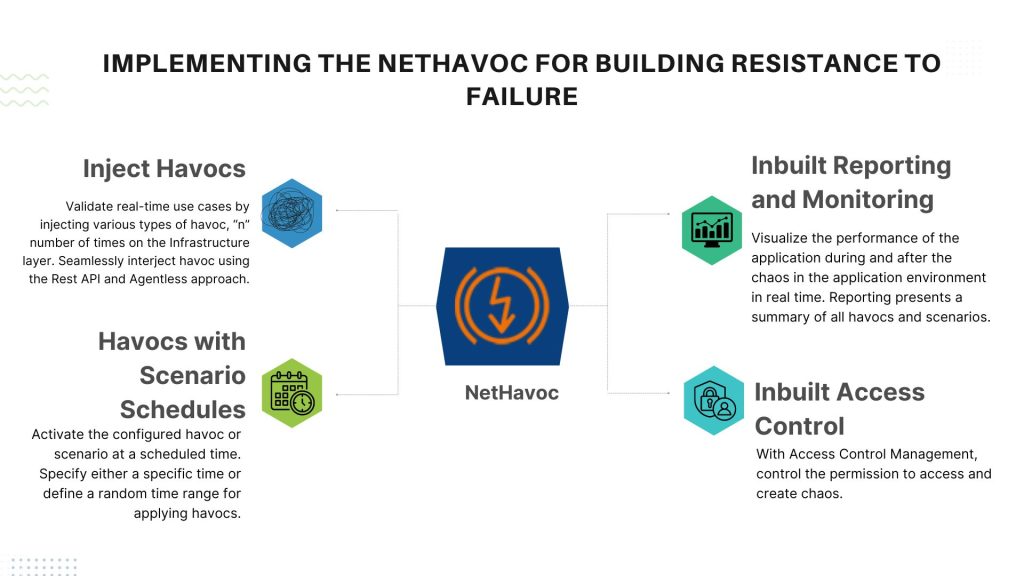
Introduction:
“In our chaos engineering blog series, we’ve delved into the origins, principles, user personas, benefits, best practices, and challenges of this discipline. Now, let’s explore what Chaos Engineering truly entails, its crucial role for every Site Reliability Engineer (SRE) and DevOps practitioner, and practical steps to effectively implement it.”
In the ever-evolving landscape of software development and operations, the need for reliability and resilience has become paramount. As systems grow in complexity and scale, the probability of failures increases, leading to potential downtime, user dissatisfaction, and revenue loss. This is where Chaos Engineering emerges as a crucial practice, enabling teams to proactively identify weaknesses in their systems and build more resilient architectures.
Why Chaos Engineering is Important for SREs and DevOps Practitioners
For SRE practitioners, Chaos Engineering directly contributes by proactively identifying weaknesses in systems and architectures, enabling SREs to improve reliability and scalability. Similarly, DevOps practitioners, typically involve optimizing development and deployment processes, fostering collaboration between teams, and enhancing overall system agility. Chaos Engineering fits into these objectives by facilitating continuous improvement through experimentation and feedback loops, thereby aligning with DevOps principles of automation and collaboration.
Chaos Engineering significantly enhances the effectiveness of Site Reliability Engineers (SREs) and DevOps practitioners in several ways:
- Improved Reliability and Scalability Testing: Chaos Engineering allows SREs to simulate real-world failure scenarios in a controlled environment. By deliberately injecting faults and failures into systems, SREs can uncover weaknesses and vulnerabilities that might not be apparent under normal conditions. This proactive approach to testing enhances system reliability and scalability, aligning with the KRAs of ensuring system stability and performance.
- Faster Incident Response and Resolution: Chaos Engineering exercises help teams develop better incident response processes. By regularly subjecting systems to controlled chaos, SREs and DevOps practitioners gain insights into how their systems behave under stress and learn to respond effectively to incidents in real-time. This aligns with KRAs related to minimizing downtime and improving mean time to resolution (MTTR).
- Optimized Automation and Orchestration: DevOps practitioners aim to streamline development and deployment processes through automation and orchestration. Chaos Engineering provides valuable feedback on the effectiveness of these automation workflows by testing how systems respond to failures in automated environments. By incorporating chaos experiments into their CI/CD pipelines, DevOps teams can identify and address potential issues early in the development lifecycle, making their automation efforts more impactful and aligned with KRAs focused on process optimization and efficiency.
- Enhanced Collaboration and Communication: Chaos Engineering promotes cross-functional collaboration by involving teams from development, operations, and other areas of the organization in designing and executing experiments. Through collaborative chaos exercises, teams can gain a deeper understanding of system dependencies and interconnections, fostering better communication and alignment across different departments. This aligns with KRAs related to promoting a culture of collaboration and breaking down silos within organizations.
Integrating performance testing and observability into Chaos Engineering enriches its impact:
- Comprehensive Fault Injection: Simultaneously testing system resilience and performance metrics.
- Early Detection and Mitigation: Rapidly identifying and addressing performance degradation during chaos experiments.
- Continuous Improvement: Using feedback loops from performance data to refine Chaos Engineering strategies.
- Holistic Understanding: Correlating performance metrics with fault injection events for more informed decision-making.
Implementing the NetHavoc for building resistance to failure
NetHavoc empowers Site Reliability Engineers (SREs) and DevOps practitioners through a comprehensive approach.

With Cavisson’s platform, SREs and DevOps teams can:
- Streamline Operations: By centralizing performance testing, monitoring, and chaos engineering tools in one platform, teams can streamline operations, reduce tool sprawl, and simplify management.
- Enhance Collaboration: Cavisson’s unified platform fosters collaboration between development, operations, and other teams by providing a common framework for monitoring and testing activities.
- Improve Efficiency: With all essential tools available in a single platform, teams can optimize workflows, automate processes, and improve efficiency in managing and maintaining systems.
- Accelerate Problem Resolution: The integrated nature of Cavisson’s platform enables rapid problem identification and resolution by correlating performance data from different sources, such as logs, metrics, and user interactions.
Furthermore, Cavisson’s platform offers the flexibility for organizations to use individual components, such as NetHavoc Chaos Engineering Platform, as standalone solutions if needed. This flexibility ensures that organizations can tailor their approach to meet specific requirements while still benefiting from the advantages of a unified platform.
Conclusion
In the dynamic landscape of modern software development, Chaos Engineering has emerged as a vital practice for Site Reliability Engineers (SREs) and DevOps practitioners, offering a proactive means to identify weaknesses, enhance reliability, and fortify system resilience. By deliberately introducing controlled chaos into systems, teams can uncover vulnerabilities, refine incident response processes, optimize automation workflows, and promote collaboration across departments.
Cavisson’s platform provides a comprehensive solution that caters to the needs of SREs and DevOps teams, enabling streamlined operations, improved collaboration, enhanced efficiency, and expedited problem resolution. Whether organizations opt for the full suite of tools or individual components tailored to their specific requirements, Cavisson’s platform ensures flexibility without compromising the benefits of a unified approach, making Chaos Engineering not just a strategic choice but an indispensable necessity in today’s digital ecosystem.
Contact us today to start your chaos engineering initiatives.

